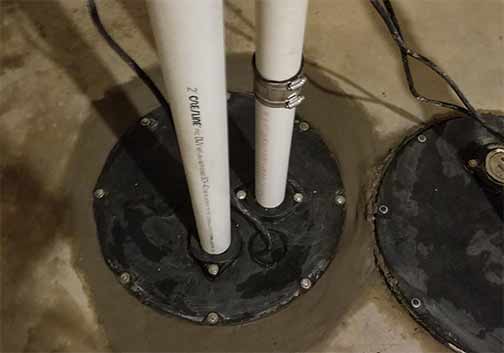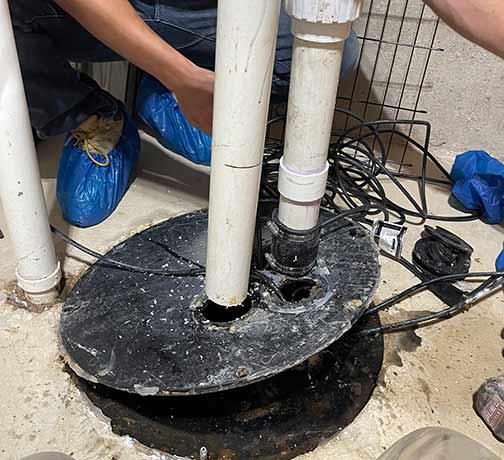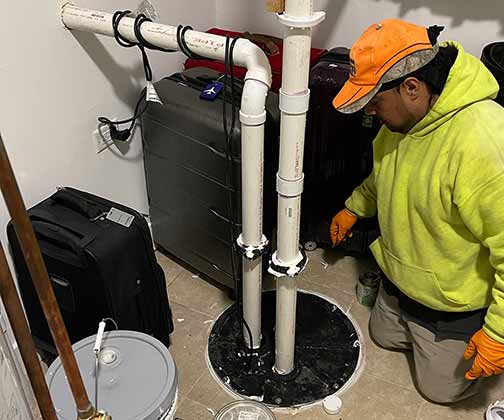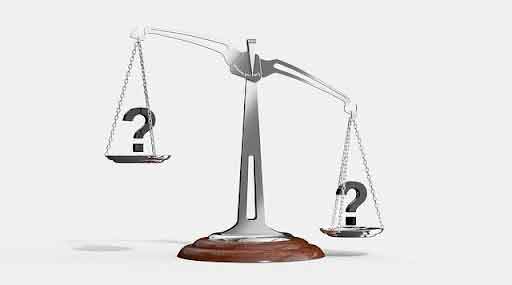
Proper wastewater disposal is essential for the function of your home and the safety of everyone who lives in your house. If your home is like many other homes in the Chicago area, your building’s plumbing will carry out this task efficiently, using only the force of gravity.
But if some plumbing fixtures in the home are below the level of your main sewer line, you will need a sewage ejector pump. A sewage ejector pump lifts wastewater from the lower levels of a home to a higher level from where the water can flow freely out of the property.
Azure Sky Realty notes that sewage ejector pumps are essential in homes with basement plumbing fixtures at a lower level than the municipal sewer lines. Homes with septic drain fields at a higher level than some of the home’s plumbing fixtures also need them.
How does a sewage ejector pump work, and why is it essential for Chicago homes to have them?
How sewage ejector pumps work
A sewage ejector pump works on the same principle as a regular basement sump pump. The main difference between the two is that while ejector pumps handle wastewater generated from inside the home, sump pumps handle rainwater that enters the house from outside.
The primary components of a sewage ejector pump system are:
- A sewer basin where wastewater from the connected plumbing fixtures goes
- A pump that pushes wastewater out of the basin into the main sewer line
- A check valve check to keep pumped wastewater from flowing back into the basin
- A discharge pipe that channels the pumped water into the sewer line
Typically, the sewer basin for a moderate-sized home holds around 30 gallons of waste. Drain lines from the plumbing fixtures connected to the system slope into the sides of the basin. When the amount of wastewater inside the basin reaches a predetermined level, the pump is activated.
The ejector pump, which sits inside the basin, is switched on and off with the help of a float switch – a movable device that rises and falls with the level of wastewater inside the basin. After the water inside the basin is pumped out, the pump is deactivated as the float switch falls.

Due to the critical role a sewage ejector pump plays in the sewage system of your Chicago home, it is essential to know what to look for when buying one.
What you should know about sewage ejector pumps
Chicago’s unique topography makes it necessary for many homes around the city to have a sewage ejector pump system. Without ejector pumps, homes in the city’s low-lying areas would constantly have to deal with unsanitary conditions because of their ineffective drainage systems.
Due to the critical role a sewage ejector pump plays in the sewage system of your Chicago home, it is essential to know what to look for when buying one. The following are the key factors to consider when buying a sewage ejector pump for your home.
Pump capacity
The right pump size for your home depends on the average daily wastewater flow. A mismatch between your home’s needs and the pump size will lead to backups and pump failures. It is also a good idea to have some excess capacity.
Power source
Most people opt for an electric-powered pump. But an electric-powered pump will not work if there is a power outage in the area. That is one reason to consider a battery-powered system, either as your primary pump or backup system.
Professional installation
You need professional help when estimating your building’s average daily wastewater flow, the size of the sewer basin and the pump capacity. You also need a professional plumber to help you install the system.

You need professional help when estimating your building’s average daily wastewater flow, the size of the sewer basin and the pump capacity. You also need a professional to help you install the system.
Maintaining your sewage ejector pump
Proper maintenance ensures the smooth function and longevity of your sewage ejector pump. If your sewer basin and ejector pump are of the correct size but the system is poorly maintained, your pump’s performance will be sub-optimal. How should you maintain a sewage ejector pump?
Monthly inspections
Check the pump every month. Critical inspection components include the float switch, discharge pipe and check valve.
Cleaning and testing
When inspecting the system, test it to make sure the float switch is working properly. You also want to clean the sewer basin and pump.
Professional inspection
In addition to monthly pump inspections (which do not have to be done by a professional), you should have the system inspected at least once a year.
Regular servicing
Yearly inspections should include comprehensive service of the ejector pump and the other components of the system by a qualified professional.
Finally, sewage ejector pumps play a crucial role in your building’s drainage system. Keeping the system in top shape is one of the most important ways to protect your property and finances. If you are having issues with your sewage ejector pump or thinking of replacing your current ejector pump, we can help you.


